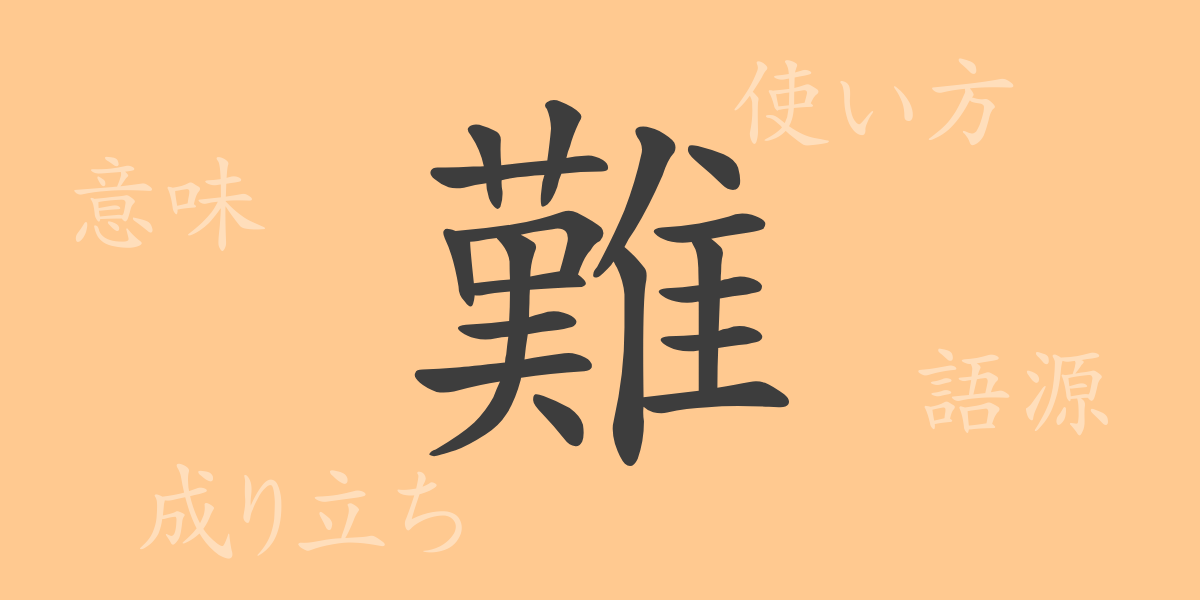The beauty of the Japanese language lies in its complexity and depth. Each Kanji character carries a meaning derived from its shape and lines, sometimes reflecting our emotions or philosophies. The Kanji ‘難 (ナン)’ epitomizes many challenges and difficulties, as suggested by its form. This article delves deep into the world of the Kanji ‘難’, exploring its origins, meanings, usage, and how it is utilized in the daily lives of the Japanese people.
Origins of ‘難 (ナン)’
The Kanji ‘難’ originated from ancient China, evolving over time to its present form. Tracing back its roots, ‘難’ was formed from the combination of ‘𣦼’, representing water disasters, and ‘心 (こころ)’, meaning heart. Originally, it depicted the impact of water calamities on the spirit, but later came to denote difficulties and trials in general.
Meaning and Usage of ‘難 (ナン)’
The Kanji ‘難’ encompasses meanings such as ‘difficulty’ and ‘trial.’ It is also used to describe something ‘hard to understand’ or ‘difficult.’ This character is widely used in everyday conversation, literature, and business, pairing with various adjectives and nouns to enable diverse expressions.
Reading, Stroke Count, and Radical of ‘難 (ナン)’
The Kanji ‘難’ is frequently used across many contexts as a common Kanji in Japan.
- Readings: On’yomi ‘ナン’, Kun’yomi ‘かた(い)’, ‘むずか(しい)’
- Stroke Count: 18 strokes
- Radical: 雨 (あめかんむり)
Phrases, Idioms, and Proverbs Using ‘難 (ナン)’
There are numerous idioms, phrases, and proverbs that include ‘難’. For instance, ‘困難 (こんなん)’ means ‘extremely difficult,’ describing a challenging situation. ‘難問 (なんもん)’ refers to a difficult problem, and ‘難局 (なんきょく)’ denotes a challenging situation. The proverb ‘難行苦行 (なんこうくぎょう)’ illustrates extremely arduous tasks that symbolize spiritual growth or ascetic practices.
Conclusion on ‘難 (ナン)’
The Kanji ‘難’ allows us to glimpse human endeavors and cultural aspects through its historical semantic evolution. It plays a significant role in the Japanese language, emphasizing the importance of overcoming difficulties and the power of articulating such challenges. From this profoundly meaningful character, we can learn and perceive a great deal about life and resilience.

























